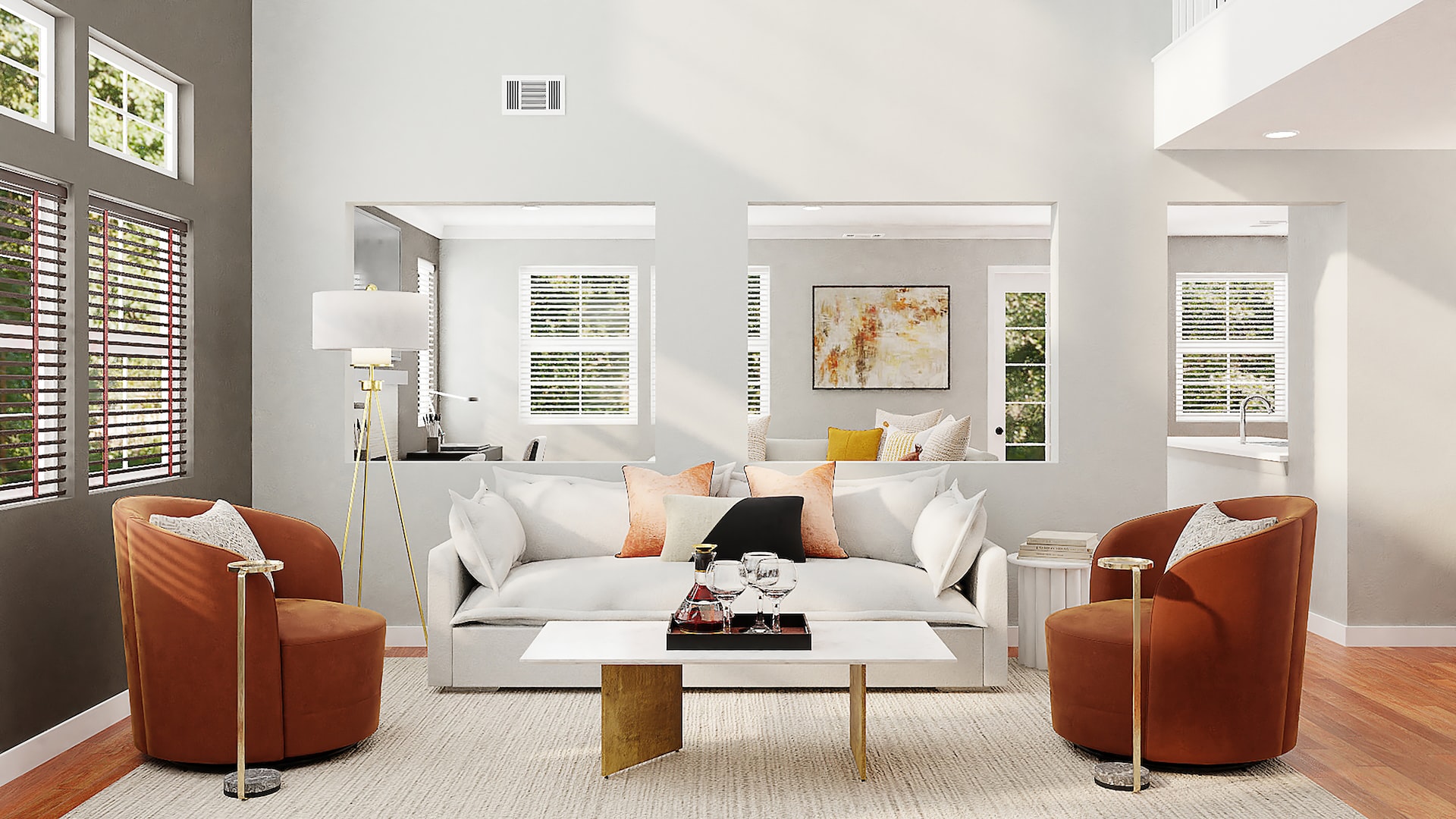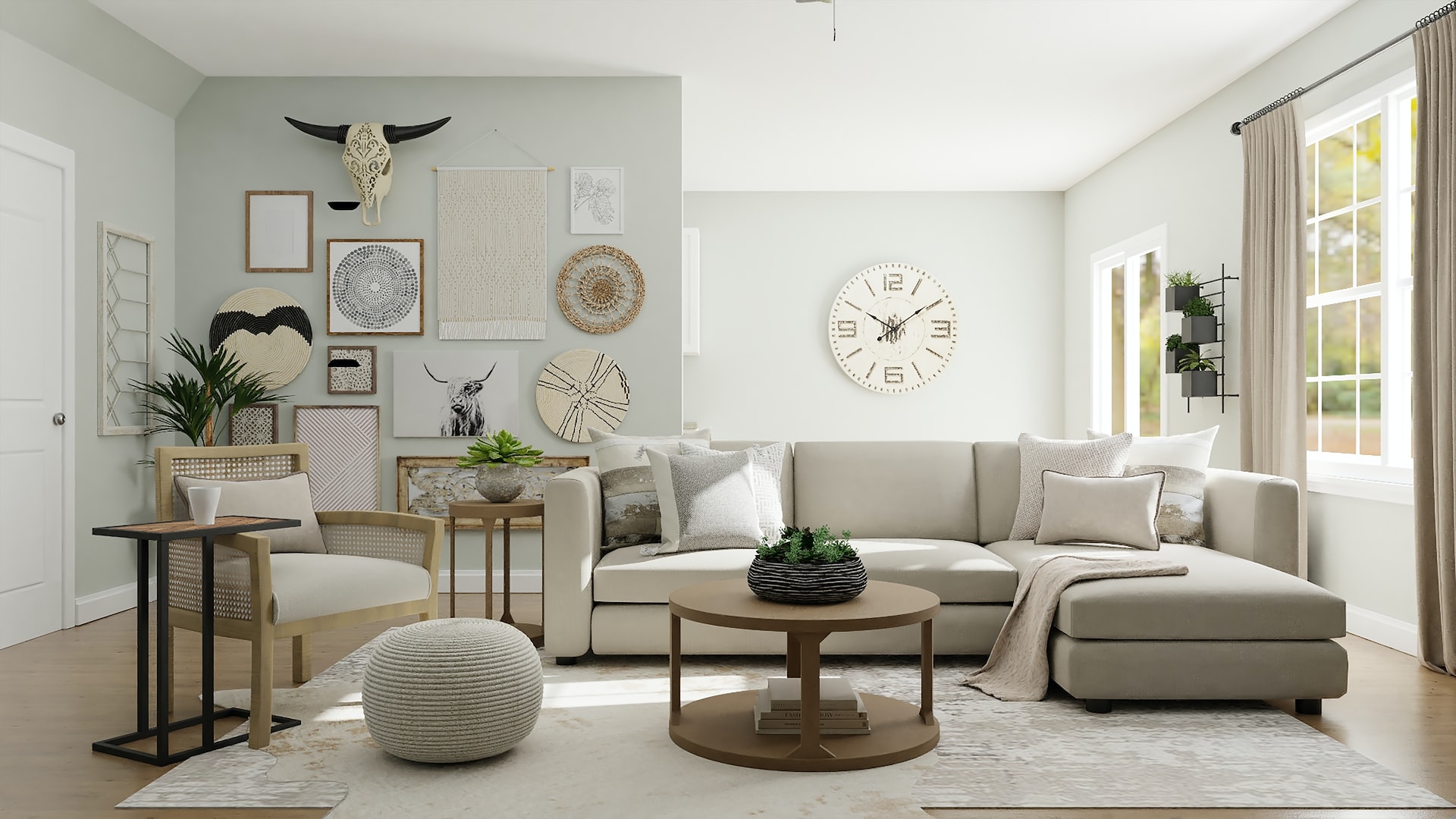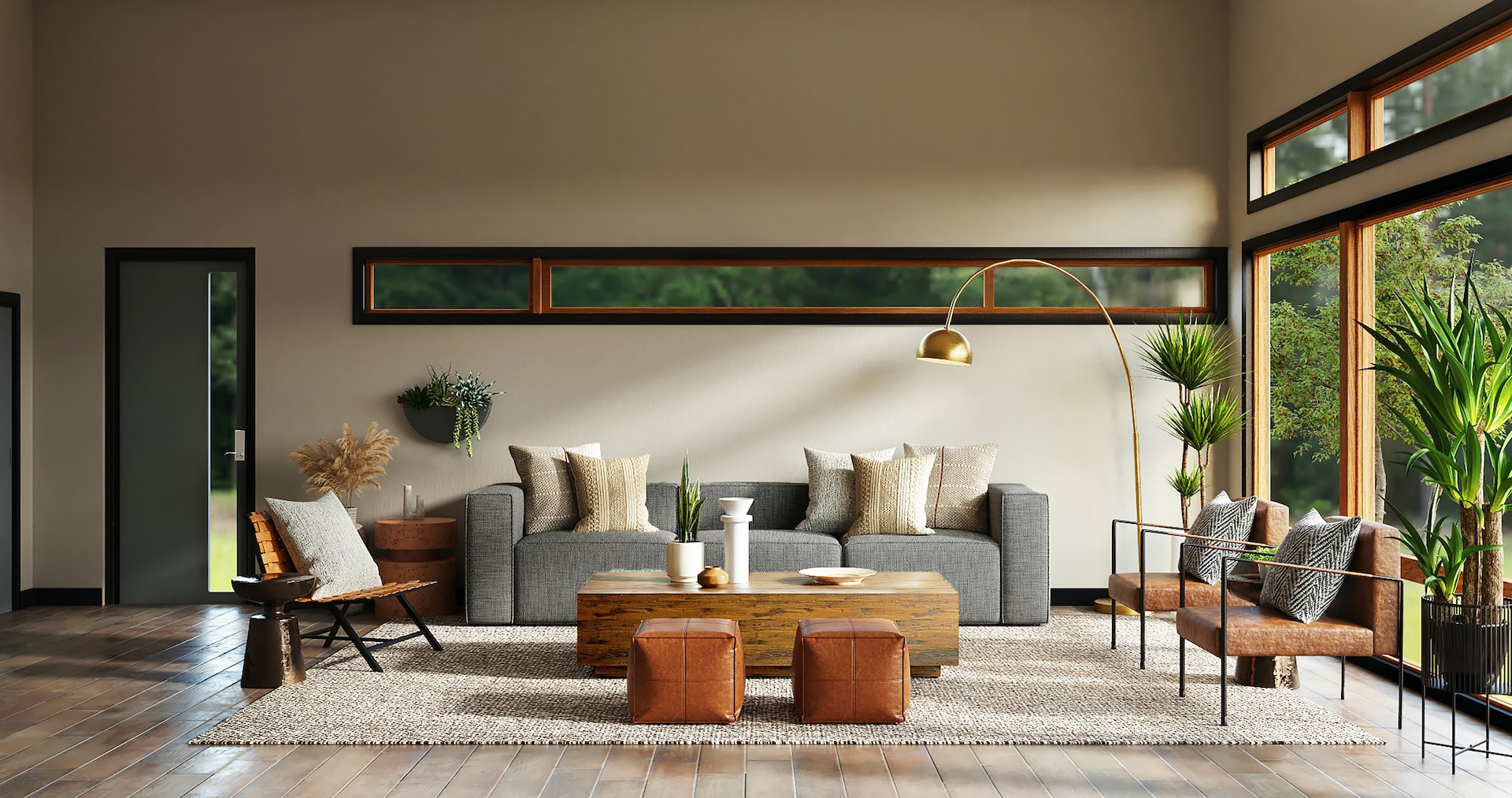Furniture vs. furnishings. These are two words often used interchangeably, but did you know there is a distinct difference between them? As a homeowner, you know the importance of having both furniture and furnishings in your home. Furniture serves as the central building block of any living space. While furnishings provide unique touches that add flair and personality to your décor.
In this ultimate guide, we will cover everything there is to know about how these two terms and how both can help to enhance any home’s overall aesthetic. So if you’re looking for some guidance on finding the perfect pieces for your space, read on!
Furniture vs. Furnishings

When it comes to home decor, there are two main categories of items that you need to consider: furniture vs. furnishings. Let’s look at the differences between these two categories.
Furniture vs. Furnishings: Definitions
Let’s start by defining exactly what each term means. By definition, furniture refers to any item or collection of items used for seating, sleeping, or storing items in a home or office space. Examples of furniture items include beds, coffee tables, chairs, couches, dressers, and desks. Basically, anything that you would typically find in a living room or bedroom.
Furnishings refer to the items or fixtures used as decorations and accessories in a room to add style and personality. These can be both small and large items such as rugs, lamps, curtains, wall art, clocks, and mirrors. Essentially anything that helps bring a room together and gives it its unique aesthetic.
Functionality vs Aesthetics
The main difference between furniture and furnishings lies in their purpose. Furniture is functional while furnishings are decorative. Furniture provides seating or storage solutions for everyday activities like eating meals or putting clothes away.
Whereas furnishings are purely decorative elements designed to make a room more aesthetically pleasing. Though both are important when creating an attractive living space; furnishing should be used sparingly so as not to overwhelm the space with unnecessary clutter.
The Benefits of Furniture Over Furnishings

When choosing between furniture and furnishings, it is important to consider the benefits of each. Furniture has a few distinct advantages over furnishings.
✴Durability
One of the biggest benefits of choosing furniture over furnishings is that it lasts longer. Because furniture is typically made from more durable materials like wood, metal, or leather, it tends to stand up better over time than furnishings. Which are often made from fabrics and other less-durable materials. This means that investing in quality pieces of furniture can be worth the money in the long run since they will last for years to come.
✴Versatility
Furniture also offers more versatility than furnishings when it comes to rearranging or refreshing your space. Unlike furnishings, which can be tricky to move around if you want to switch things up without having to buy new pieces every time, furniture is easy to move around and repurpose as needed. This makes it easy to give any room in your house a quick makeover without breaking the bank!
✴Functionality
Furniture also provides functionality that goes beyond simply making your space look nice. Pieces like desks or chairs offer practicality as well as beauty—allowing you to get work done in style and comfort while still enjoying how great everything looks! Investing in quality pieces of furniture can therefore provide both aesthetic appeal and functional value for your home.
How to Choose the Right Furniture for Your Home

Choosing the right furniture for your home can be overwhelming. So here are some tips to help you find the perfect pieces for your space.
🧱Consider Your Lifestyle
Before you start shopping, consider how much use the piece of furniture would get and who will be using it. Think about what activities typically take place in the room where the piece would go. For example, if you’re buying a sofa for a family room, then durability should be a top priority since it will likely see more wear and tear than other pieces in your home.
🧱Establish a Budget
It’s important to establish a budget before you start shopping. This will help you narrow down your choices and avoid overspending. Also, be sure to factor in additional costs like delivery or assembly fees if applicable.
🧱Measure Twice & Check Again
Measuring twice is essential when buying large pieces of furniture like sofas and beds because they may look great on paper but not work as well once they arrive home due to size constraints (or vice versa!). Be sure to double-check all measurements before ordering anything online or at brick-and-mortar stores so there are no unpleasant surprises after delivery day.
🧱Think About Functionality
Think about how it will be used in your home and what functions it needs to serve to meet your needs. For example, if you need extra seating in your living room but don’t have much floor space, consider an ottoman or armchair instead of a sofa or loveseat.
🧱Choose Quality Materials
Investing in quality materials is important because these pieces of furniture will last longer and look better over time than cheaper materials would. Consider pieces made out of wood, metal, or leather as these materials are more durable than fabric or plastic and can stand up to daily wear-and-tear better than other materials can.
🧱Consider Color & Style
Make sure the piece coordinates with other items in the room by sticking with one color palette or style throughout the entire space (i.e., modern vs traditional). If you want to add a pop of color or pattern into the mix, choose accent pieces like pillows or throws that can be swapped out easily when you’re looking for something new.
🧱Stick With Neutral Colors
If you want pieces that will last longer than one season, go with neutral tones like white, gray, light brown, etc. These colors tend to stay in style longer than bolder colors which may look dated after a few seasons have passed by without an update from you.
🧱Look Beyond Aesthetics
Don’t just focus on how something looks; also consider how well it functions in the space where it will reside in addition to how comfortable or sturdy it is (as applicable). Also, consider how durable and low-maintenance materials are such as leather or microfiber fabrics which are both soft & stylish but also easy to clean & maintain over time.
🧱Consider Scale
Scale is key when choosing furniture pieces as too small of an item can look out of place. While too large can make a room feel cramped & cluttered. So make sure each item fits within its allotted area appropriately & comfortably before bringing it into your home.
🧱Enjoy The Process
Remember that furnishing a home should be fun – not overwhelming. So enjoy every step along the way! Take time to look at different styles & options, get creative with DIY projects, & find unique ways to combine existing pieces until everything feels ‘just right” inside your personal space.
🧱Shop Around
Don’t settle on just one store. But instead, shop around at different places online & in person to find the best deals & widest selection. This will help you get the most bang for your buck. It also ensures that you are satisfied with all of the pieces you bring into your home.
🧱Check Reviews
Always check customer reviews before purchasing anything online. As this could save time & money if there are any potential issues with quality control/shipping delays etc. Since it could potentially lead to disappointment down the road.
🧱Stay Organized
Keep track of all purchases including receipts/invoices etc. So that returns/repairs can easily be handled if needed without hassle later on. This organization may even save time when re-arranging items in future due dates because everything was labeled properly during the initial setup phase.
Follow these tips when buying furniture for your home and you’ll be sure to make the best decision possible.
Where to Find the Best Furniture Deals
Whether you’re looking for furniture online or in-store, there are plenty of places to choose from that offer amazing prices and quality pieces. Let’s explore some of the best places to buy furniture both online and in-store.
🛒Online Shopping for Furniture
The internet has made shopping for furniture easier than ever before. Countless websites offer discounts and sales on bedroom sets, living room chairs, dining tables, and more. However, it can be hard to tell which sites offer great deals without sacrificing quality. Here are some of the most popular online stores to purchase furniture from:
Wayfair
Wayfair is one of the most popular online furniture stores because they have a massive selection of items at affordable prices. Their website is easy to navigate and they offer free shipping on many orders. Plus, if you’re not happy with your purchase there’s a no-hassle 30-day return policy!
Overstock
Overstock is another popular destination for purchasing furniture online because they have competitive prices and fast shipping times. They also have an extensive selection of items from all over the world so you can find unique pieces that fit your style perfectly. Plus, their customer service is top notch so you can feel confident about your purchases.
🛒In-Store Shopping for Furniture
If you prefer to shop in-store then there are still plenty of options out there! Many department stores carry a variety of different styles and types of furniture at reasonable prices. Here are some great places to look when shopping for furniture in-store:
IKEA
IKEA offers a wide range of affordable home furnishings with modern designs that fit any budget or style preference. They also provide helpful resources like assembly instructions and design tutorials so you can get just what you need without having to worry about installation or setup time.
Target
Target is another great place to find discounted furniture pieces at reasonable prices. Their selection includes everything from bedroom sets to office items so it’s easy to find exactly what you’re looking for without spending too much money.
🛒Vintage Shops & Thrift Stores
For anyone looking for unique pieces that won’t break the bank consider checking out vintage shops and thrift stores. they can be full of surprises! These types of stores typically specialize in secondhand items but may also sell antique pieces as well as one-of-a-kind finds.
They tend to be more affordable than other retail locations because they source their items from anywhere they can find them including estate sales auctions estate sales garage sales etc. So prices vary greatly depending on what type of item you’re looking for. You just never know what treasures await inside these kinds of shops. Take a chance and see what gems you might discover.
How to Properly Care for Your Furniture

✔️Clean Regularly
It’s important to clean your furniture regularly—at least once a week. Using a soft cloth or brush attachment to a vacuum cleaner. This will help remove any dirt, dust, pet hair, or other debris that has accumulated over time. If there are any spills or stains on the surface of the furniture, wipe them up immediately with a damp cloth and mild soap before they have a chance to set in.
✔️Dust Carefully
Dusting is an important part of taking care of your furniture because dust can cause scratches and damage if left unchecked. When you dust, use a soft cloth like microfiber instead of a feather duster. Feather dusters can cause more harm than good by pushing the dust particles into crevices instead of removing them from surfaces.
Make sure to pay extra attention when cleaning hard-to-reach areas like grooves or carvings in wood pieces and around hardware such as handles and knobs.
✔️Avoid Direct Sunlight
Direct sunlight is one of the biggest enemies of wooden furniture, so it’s important to keep it out of direct sunlight as much as possible. Over time, UV rays from the sun can cause fading and discoloration on wooden surfaces. So try to position any pieces away from windows where possible. If this isn’t an option, use window treatments like blinds or curtains to filter out some of the sunlight during peak hours (11 am-3 pm).
✔️Condition Leather Pieces Periodically
Leather pieces should be conditioned periodically with leather conditioner products that are specifically designed for leather surfaces. This will help prevent cracking and drying out over time due to regular wear and tear. As well as exposure to sunlight or extreme temperatures like heaters or air conditioners. Make sure not to use any harsh chemicals when cleaning leather. These can strip away vital oils that keep leather supple and looking its best.
✔️Rotate Cushions
Rotating cushions helps reduce wear on both the cushion fillings as well as the fabric itself by evening out any impressions caused by sitting in one spot too long. On average, it’s recommended that you rotate cushions every 6 weeks. So they don’t become permanently misshapen due to being sat in one spot for too long. Doing this will help keep your cushions looking like new for longer!
✔️Treat Spills Quickly
Accidents happen, but it’s important to treat spills immediately before they can stain or damage the fabric or wood surface of your furniture. If you spill something on your furniture, blot the area with a clean cloth and use warm water and mild detergent (if necessary) to remove any residue from the spill. Avoid scrubbing too hard as this could damage the surface of your furniture or cause color fading over time.
✔️Preventative Maintenance
Taking preventative measures is important for ensuring that your furniture stays in top condition for years to come. Before bringing new pieces into your home, inspect them for any existing damage like scratches or chips that could worsen over time if unaddressed.
Additionally, consider investing in protective covers for items such as upholstered chairs or couches that will be exposed to heavy daily use – these will help keep them looking good while also protecting against dirt buildup and staining potential spills or accidents more easily cleaned up without affecting their appearance.
Frequently Asked Questions
Is Furniture Maintenance Necessary?
Yes, taking the time to properly care for your furniture is essential for ensuring that it lasts for many years. Regular cleaning and preventative maintenance will help keep it looking its best while also protecting against dirt buildup, stains, and scratches that can affect the look of your furniture over time.
What’s the Best Way to Clean Wooden Furniture?
The best way to clean wooden furniture is with a damp cloth and mild soap before letting it air dry. Avoid using any abrasive cleaning materials, as this could damage the surface of the wood. Additionally, make sure to dust off furniture regularly to prevent dirt buildup and possible scratches.
What’s the Best Way to Clean Upholstered Furniture?
For upholstered furniture, regular vacuuming is recommended to keep dirt and dust from building up in the fabric. You can also spot-clean any spills or stains with a mild soap and damp cloth – but make sure not to scrub too hard as this could cause damage to the fabric. For more delicate fabrics, consider taking them to a professional cleaner for specialized cleaning services.
What Counts as Furnishings?
Furnishings generally refer to smaller items that help add decorative touches throughout your home—think throw pillows, drapes, rugs, lamps, and wall art. They also include all of the accessories that can be used to accessorize and complete a room’s look. Like towels and linens for bathrooms or kitchen accessories like mixing bowls and serving trays. In short, furnishings are any item that contributes to a room’s overall theme or design concept but isn’t necessarily needed for functionality purposes.
Are Kitchen Items Considered Furnishings?
When it comes to kitchen items, it depends on what type of items we’re talking about here. For example, if you’re referring to items like dishware or utensils. Those are generally considered functional items rather than decorative ones so they wouldn’t fall under the “furnishings” category. However, any decorative item in the kitchen would be considered part of your furnishings. Items like cookbook stands or cutting boards with attractive designs would count as furnishing items in the kitchen space.
What Are Interior Furnishings?
Interior furnishings refer to any type of accessory that is used inside a room as a way of adding color, texture, or pattern into the space without taking up too much visual weight or distracting from other elements in the room. This could include curtains, rugs, artwork, pillows, throws blankets – anything that adds color and texture without being too bulky or overpowering in its design concept!
What Are Examples Of Soft Furnishings?
Soft furnishings are any type of fabric-based item that is used for decorative purposes inside a room such as curtains/drapes/valances; cushions; upholstered chairs; bedding; throws; tablecloths; etc. Basically, anything made out of fabric (and sometimes faux fur) can be considered soft furnishing items!
What Are Loose Furnishings?
Loose furnishings refer to any type of accessory item that can be easily moved around from one area/room in your home to another without having to disassemble them first – things like vases, sculptures/figurines/ornaments; lamps; side table; etc… These types of accessories are often referred to as “loose” because they don’t have any real structure attached which makes them easy (and safe) to move about anywhere in your home!
Final Words
By understanding the difference between furniture vs. furnishings. You’ll be better equipped to choose the right items or equipment for your home that are both functional and aesthetically pleasing. Take the time to research and consider different materials, styles, and designs for both furniture and furnishings that will complement each other in your space. With this knowledge, you’ll be able to create a beautiful home that fits your lifestyle needs.


